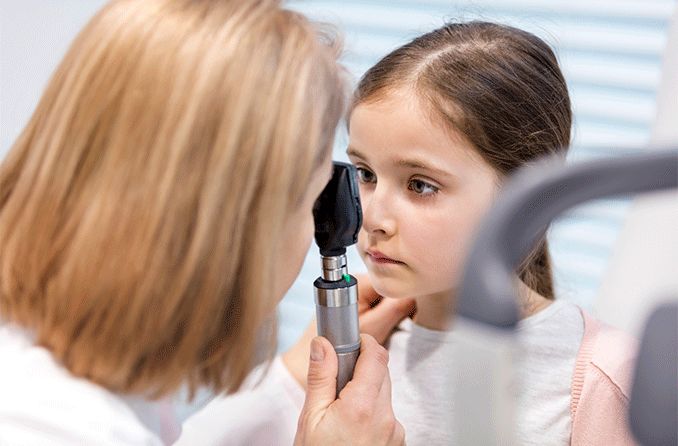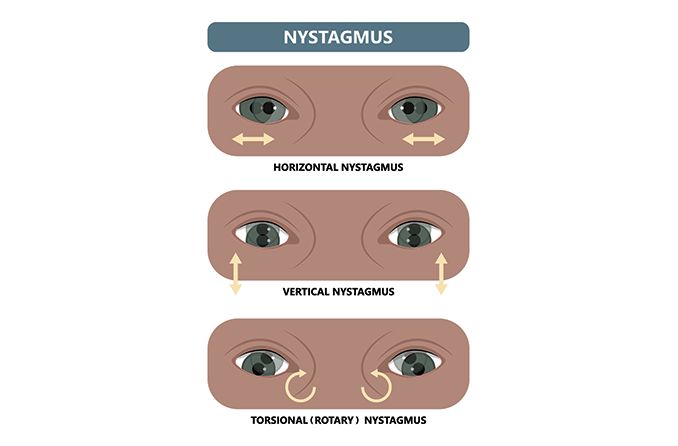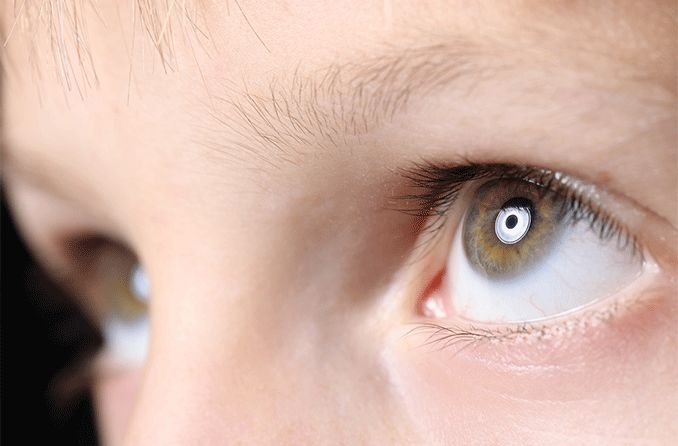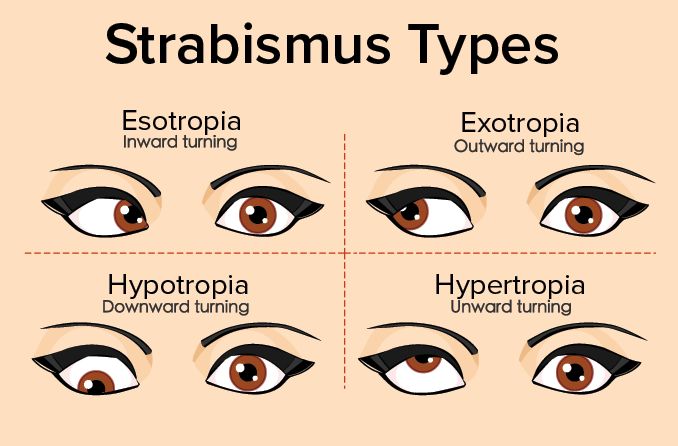Nystagmus and strabismus are two serious eye conditions that are sometimes confused.
One is an eye movement disorder; the other is an eye alignment and teaming disorder. Both can cause permanent vision problems.
This article provides an overview of nystagmus and strabismus — including the causes, signs and symptoms, and treatments for each condition.
What is nystagmus?
Nystagmus is an eye movement disorder that causes involuntary eye movement, which can be fast or slow and range in frequency. People with nystagmus will often tilt or turn their head to find the “null position” — the direction of gaze where the involuntary eye movements are least intense and bothersome to their vision.
Two broad classifications of nystagmus include congenital (present at birth or shortly thereafter) and acquired (occurring at 6 months old or later). If the nystagmus is congenital, it can be a defect in eye development, rare genetic traits or an underlying condition. Acquired nystagmus, on the other hand, occurs due to injury or trauma, a reaction to certain medications, or as a result of a newly developed condition.
Nystagmus occurs most often in the first few months of development, though older children and adults can acquire the condition as well.
What is strabismus?
Strabismus is a misalignment of the eyes that causes them to fail to work together as a team for clear, comfortable, binocular vision. Like nystagmus, strabismus can be congenital in patients, or it can be acquired due to injury or other underlying conditions.
Strabismus is primarily identified by eyes that do not look in the same direction at the same time. Possible types of strabismus include one eye being misaligned inward (“crossed eyes”) or outward (“wall-eyed”). Strabismus often can be treated with corrective lenses, vision therapy and/or surgery.
Strabismus typically appears by the time a child reaches the age of 3, although it can be acquired later in childhood and even in adulthood.
SEE RELATED: How eye twitching may be a sign of a brain disorder
Nystagmus vs. strabismus
How do nystagmus and strabismus compare? As mentioned above, both disorders typically occur in the early stages of life, whether congenital or acquired.
Here are some other ways the conditions compare and contrast:
Types
There are two types of nystagmus:
- Jerk nystagmus: Eyes quickly move in one direction and a slower movement follows in the opposite direction
- Pendular nystagmus: Eyes move at equal velocity in each direction
There are two classifications of strabismus:
- Large-angle strabismus: Misalignment of eyes is significant and obvious
- Small-angle strabismus: Eye misalignment is subtle and less obvious
Causes
Both nystagmus and strabismus can occur at birth or develop due to an injury or underlying condition. Because eye movement correlates with neurological control and function, both conditions are often associated with neurological disorders.
Are nystagmus and strabismus genetic? Though the chances of having either condition are increased if someone else in the family has it, no single genetic trait has been linked to either nystagmus or strabismus.
Signs and symptoms
As already mentioned, the primary sign of nystagmus is involuntary eye movements, and the primary sign of strabismus is misaligned eyes. However, in cases of mild or intermittent strabismus, eye alignment may appear normal.
Both nystagmus and strabismus can cause the symptom of blurred vision. In the case of nystagmus, it typically affects both eyes; in most cases of strabismus, only one eye is blurry. People with nystagmus may also have photophobia (light sensitivity).
Experiencing frequent oscillopsia (the feeling that the world is constantly in motion) or vertigo (the feeling that you’re constantly in motion) may also be indicators that a nystagmus eye movement disorder is present.
People with strabismus may also experience headaches, eye strain, double vision, and/or amblyopia.
Treatment
Treatment for both nystagmus and strabismus begins with a comprehensive eye exam and the correction of any refractive errors with eyeglasses or contact lenses to make sure vision in both eyes is as clear as possible.
Also, if there are any underlying health conditions in cases of nystagmus or strabismus, these should be addressed as well.
In some cases of nystagmus, surgery may be performed to move the “null position” to a straight-ahead gaze, allowing the person to achieve the clearest vision possible without having to turn or tilt their head.
As an alternative to surgery, drugs like Botox and baclofen sometimes are recommended to reduce the involuntary eye movements and abnormal head posture of nystagmus. But the results of these treatments are usually temporary.
For strabismus, treatment usually involves a doctor-prescribed program of vision therapy (sometimes called orthoptics) or combination of eye alignment surgery and vision therapy.
Because each condition and case is different, an eye doctor can help you determine the best decision for treatment. Since both conditions are typically developed early in life, treatment should begin as early as possible in childhood for best results.
See an eye doctor
If you or your child are experiencing signs or symptoms of nystagmus (or any mild or severe eye movement disorder) or strabismus, make an appointment for a comprehensive eye exam as soon as possible.
Your optometrist or ophthalmologist can provide an accurate diagnosis and give you more information about the best treatment options available.
READ NEXT: What is Parinaud syndrome?










